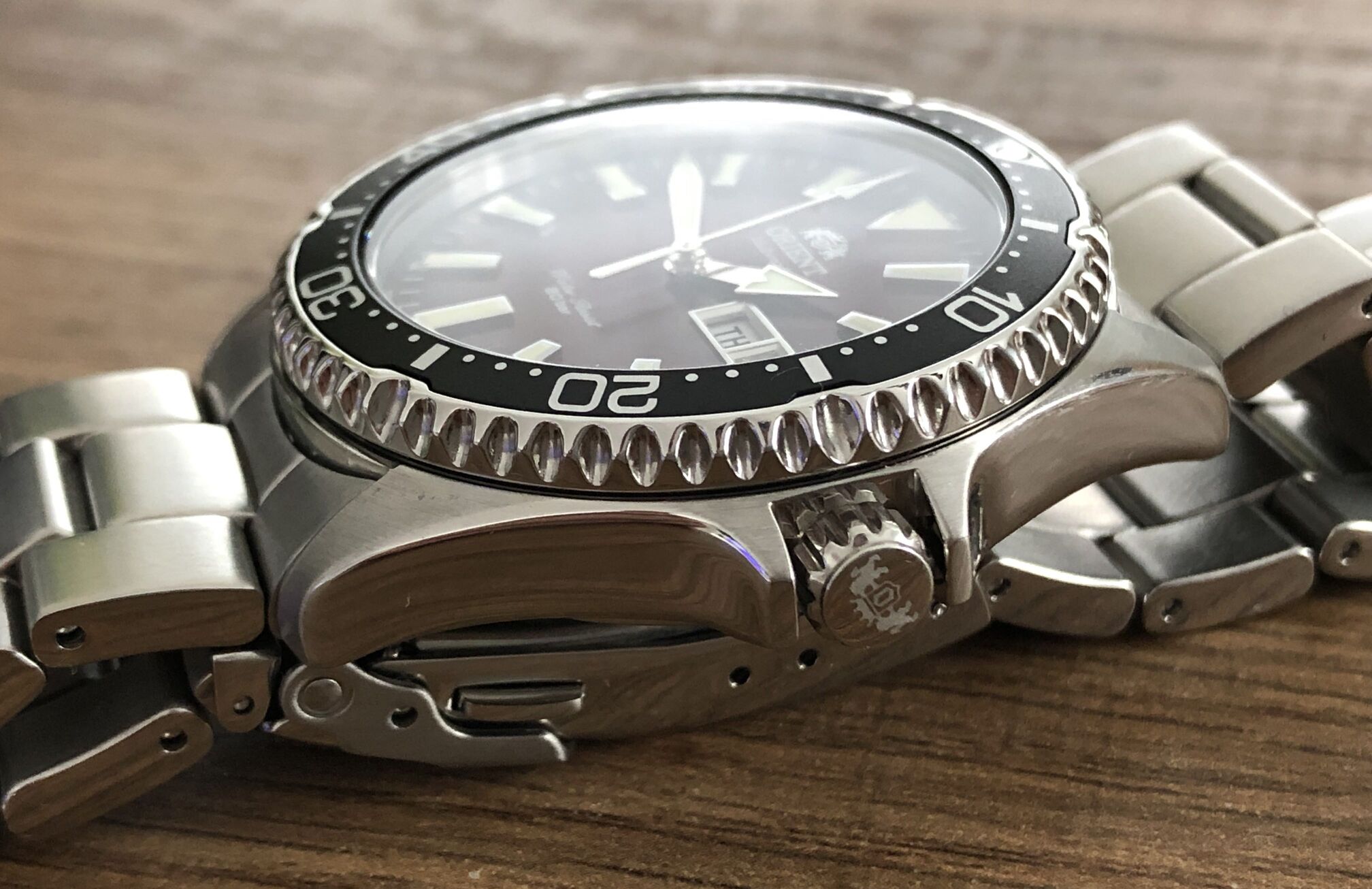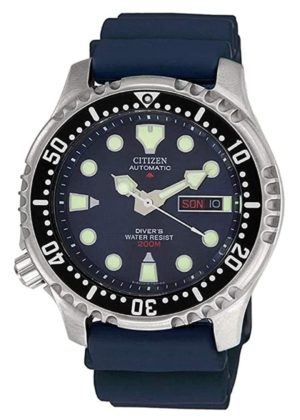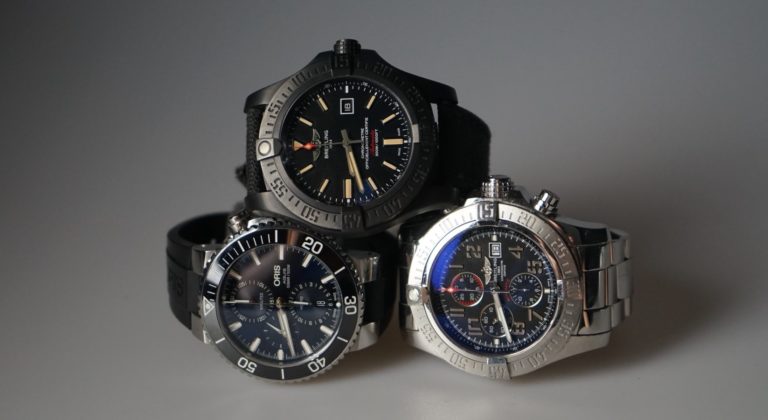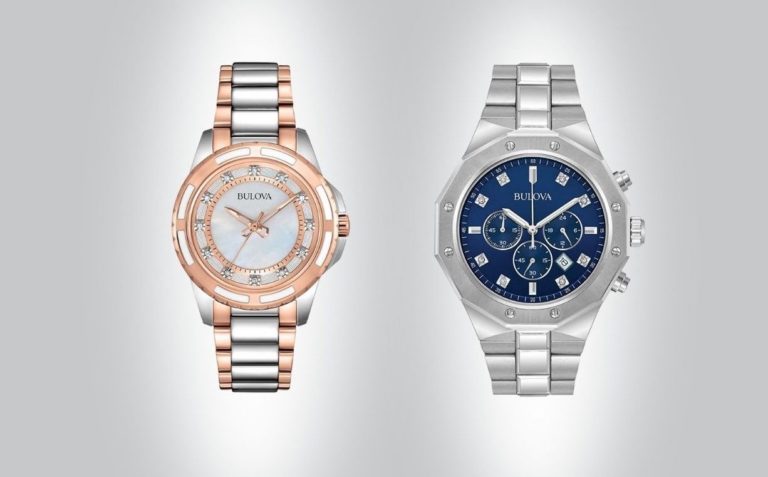Affiliate Disclosure: As an Amazon Associate I earn from qualifying purchases. Details
When it comes to watches, the crown is one of the most important parts.
Yes, it is tiny but, oh, how essential. Also, watch crowns are not all the same – they differ quite significantly from one another.
But what is a watch crown? What are its functions? And how do they operate?
In this blog post, we will answer all these questions and more.

What Is the Crown of a Watch?
A watch crown, also known as a winding stem or stem, is a small knob you typically find from the right side of the case. It is mostly made from the same substance as the case (stainless steel) to give a uniform look.
The purpose of a crown is to set the time and date, as well as wind the watch. You can think of the crown as the end piece of the watch movement that is located outside the timepiece.
Crowns come in various designs and sizes. However, what they all have in common is the ridged surface that helps for a better grip. In addition, they have the watch brand’s logo embossed on the top of the crown in most cases.
Crown Placement
When it comes to the crown’s position on the case, it is not always on the right side at 3 o’clock. Some watches have it at the 4 o’clock position, such as the Seiko 5 watches, and some feature it at 2 o’clock.

The reason for moving the crown slightly away from 3 o’clock is to do with convenience and better protection. This way, the crown stays away from the wrist’s bend and doesn’t get in the way of hits and knocks as much as it would with a standard 3 o’clock placement.
Also, some watches come with a very unusual crown position – on the left side of the case at 8, 9, or 10 o’clock. These timepieces are called destro watches, or left-handed watches (see the image on the right).
Many wearers find it more convenient if the crown stays away from the wrist’s bend entirely, which is why they wear destro watches on their non-dominant hand, the left hand.
However, these timepieces are manufactured primarily to allow carefree crown handling when worn on the right hand. Therefore, such watches are mainly for left-handed people to be worn on their non-dominant hand, the right hand.
Types of Watch Crowns
In broad terms, there are two types of watch crowns:
1) Pull-out crown – This is the most prevalent type of crown that has a push-pull configuration. It means that you have to pull the crown out of its stationary position (position 0) when you want to set the time and date. Pulling it out one click (position 1) enables you to set the time, while pulling another click (position 2) takes you to the date function.
2) Screw-down crown – This particular crown is found on dive watches and comes with a configuration that has ultimate water resistance. Similar to the pull-out crown, the screw-down version typically has several positions. However, you have to first unscrew the crown counter-clockwise to get to the pull-out setup, where you can then set the time and date.
What Can You Do With a Watch Crown?
We’ve already briefly mentioned a couple of functions the watch crowns offer. However, there is more to that.
The primary function the watch crown is used for in every timepiece is setting/correcting the time. By moving the crown clockwise/counter-clockwise, the hands move along and can be set to the desired location.
Another function it offers is setting the date, and sometimes the day of the week, too. However, not all watches come with the date window, so the function is available only in timepieces that have it.
If you happen to own a mechanical or hand-winding automatic watch, the crown has another essential purpose – winding the mechanism. In mechanically-driven watches (including automatics), the winding function is the first position when pulling out the crown.
Several automatic watches go hand-in-hand with the hacking function. It means the seconds hand halts when the crown is pulled out to the time-setting position. It is a handy feature for accurate time synchronization as the seconds don’t run while correcting/setting the time.
Besides these widespread functions, you can do several other things with a watch crown. However, they are quite rare or prevalent for certain watch brands. For example, you can set the lunar calendar on moon phase watches, activate the backlight, configure World Time, or operate a chronograph function.
Different Crown Shapes
Watch crowns not only offer various functions, but they also come in different shapes. The various crown shapes include:

1) Straight crowns: These are the most straightforward crowns found on the majority of watches. What makes them “straight” is the cylinder shape with no curves or bends.
2) Inset crowns: The inset crowns are the most subtle and least recognizable out of all the crowns. Instead of reaching out of the case, inset crowns are tucked into the case.
3) Onion crowns: As the name already hints, these crowns are shaped like onions. They are quite large and can be found mostly in vintage watches, as well as elegant dress watches.
4) Conical crowns: These crowns are pretty much like the hybrids of straight and onion-shaped crowns for having round tops with tapered sides. They are easy to operate even while wearing gloves.
5) Cabochon crowns: The last type of crown is the cabochon crown. In jewelry, Cabochon means “a gemstone of oval form polished into facets.” Therefore, cabochon crowns feature a domed gemstone on top of the crown head for decorative purposes.
Crown Protectors
You may have noticed that some crowns come with protrusions. They are called crown protectors or crown guards.
Their purpose is as straightforward as it reads – to protect the vulnerable stem from accidental hits and knocks.

Crown guards were first implemented on tool watches in the late 1950s. Today, the vast majority of dive watches and heavy-duty wristwear feature protrusions on either side of the crown.
While most crown protectors have simple protrusions, there is a unique type of crown guard. It is called a guard lever that covers the crown on all sides. It was made famous by luxury brand Panerai but has been implemented in various stylings by several other manufacturers, including Graham, Ulysse Nardin, and Invicta.
Final Words
I hope this detailed overview of watch crowns has been of help to you. As you can see, every part of a wristwatch is thought-out, even the small knob that is attached to the case. So although the crowns are tiny and seem rather irrelevant to turn your attention to, they own a significance in the overall appearance of the watch and what you can actually do with it.
You may also like:
Affiliate Disclosure: As an Amazon Associate I earn from qualifying purchases. Details
- CIGA Design Blue Planet Gilding Watch: The Best Conversation Starter Around? - April 2, 2023
- CIGA Design X-Series Review: The Most Skeleton for the Money? - July 7, 2022
- What Is A Dive Watch? A Complete Guide - May 17, 2022



